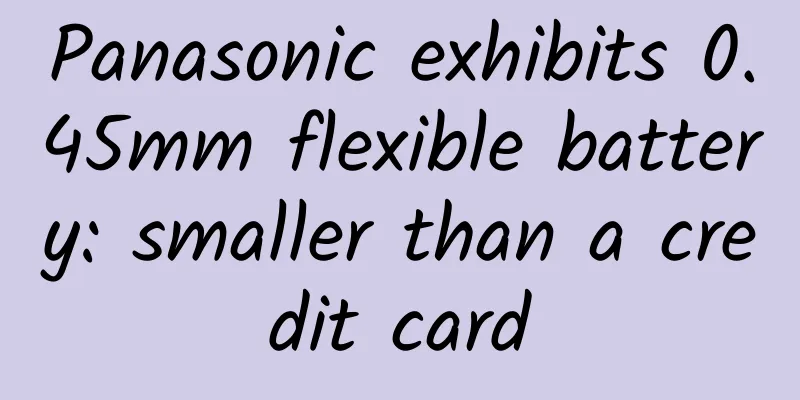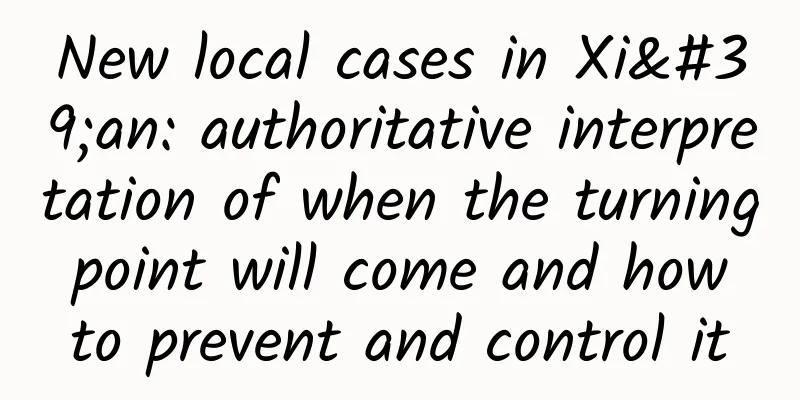Panasonic exhibits 0.45mm flexible battery: smaller than a credit card

|
The shape of most wireless devices is determined by the shape of their batteries. Because batteries are bulky but important components that cannot be easily adjusted or discarded during assembly, product developers are always limited by the size, shape and flexibility of batteries when designing a new device. But at this year's CES conference in Las Vegas, Panasonic showed off a new lithium-ion battery that could change all that. It uses an extremely thin silver wafer that can be bent or twisted 1,000 times and still retain 80% of its capacity. Panasonic showed off three versions of this new battery at CES, each slightly smaller than a credit card and able to be folded and put into a can. The project has been in the works since 2008, but Panasonic only announced it in September this year. Yoriko Yagi, assistant director of Panasonic's wearable energy division, announced that the battery is now ready for mass production, which she expects to start between April 2018 and March 2019. “We have an increasing number of small devices, such as wearables and IoT devices, and the design of these products depends on the size of the battery,” Yagi said. “If we want to miniaturize the devices, smaller batteries are a must.” Panasonic's flexible battery is only 0.45 mm thick and has a relatively small battery capacity. The largest version, CG-064065, has a maximum battery capacity of 60 mAh, and the smallest version has only 17.5 mAh. (For comparison, the peak capacity of the largest smartphone battery is about 3500 mAh) This means that the best application scenarios for this new type of battery are wearable card-type devices and Internet of Things application devices. Panasonic began providing some samples to potential users in October this year, but the company has not yet set a price for this battery. This flexible battery can be expanded to more portable small devices such as smartphones in the future. Yagi said: "Basically Panasonic can complete these designs, but our goal is not to do this." This reminds us of the explosion of high-capacity lithium batteries in some smartphones (RIP for Samsung Note 7). Safety issues have made Panasonic now focus on wearable and IoT devices that only require low power. Many other companies and researchers are also developing flexible lithium batteries, but Yagi pointed out that Panasonic's battery has the best performance and the best testing record so far. To develop this flexible battery, Panasonic rethought the basic elements of battery design. Lithium-ion batteries have an anode made of lithium oxide and a cathode made of graphite. The two layers are separated by a liquid or gel-like ion electrolyte. When the battery is charged, lithium ions pass through the electrolyte and are stored in the cathode. When the battery delivers power, the ions return to the anode. Most of the time, each reactive structure in a lithium-ion battery is cylindrical, with the cathode and cathode layers wrapped around each other. If this structure is bent or folded, the outermost layer will move further and further away from the innermost layer, eventually making the positive and negative electrodes unable to connect, and the battery capacity will gradually dissipate. In order to obtain a flexible battery, Panasonic researchers decided to abandon the cylindrical structure design, no longer let the positive and negative poles wrap each other, but directly stack the electrodes on a thin rectangular wafer. Then, the battery is wrapped in a special aluminum shell with good ductility. Another big challenge is how to charge the battery. The battery must be wirelessly rechargeable because Panasonic doesn't want to reserve space for charging parts (such as a USB port) in the thin design of the battery. Unfortunately, most wireless charging devices on the market are too powerful for small devices, and Panasonic's flexible battery can only withstand a charging current of 60 mA. Finally, Panasonic designed its own wireless charging station, which will be bundled with the battery in sales. Yagi said that when applied to relatively simple devices (such as fitness pedometers), the battery can be used for 4 weeks on a single charge. Yagi said that based on the mass production of CG-064065 and related devices, Panasonic is exploring more possibilities: "We think this flexible battery has a lot of potential in the future." As a winner of Toutiao's Qingyun Plan and Baijiahao's Bai+ Plan, the 2019 Baidu Digital Author of the Year, the Baijiahao's Most Popular Author in the Technology Field, the 2019 Sogou Technology and Culture Author, and the 2021 Baijiahao Quarterly Influential Creator, he has won many awards, including the 2013 Sohu Best Industry Media Person, the 2015 China New Media Entrepreneurship Competition Beijing Third Place, the 2015 Guangmang Experience Award, the 2015 China New Media Entrepreneurship Competition Finals Third Place, and the 2018 Baidu Dynamic Annual Powerful Celebrity. |
>>: Counterpoint: Global semiconductor revenue to grow 19% in 2024
Recommend
Apple's A16 chip claims to be 4 nanometers, but is internally marked as 5 nanometers. Why is it not considered false advertising?
Recently, there was news that the A16 Bionic chip...
Does water have a color? Why is swimming pool water blue?
Today's Tadpole Quiz is here! The above is @A...
If you don’t take care of yourself during the Autumnal Equinox, you’ll have wasted your time! Take this guide to keeping healthy
It’s time to find your autumn johns! The Autumnal...
How a programmer can increase his net worth 100 times in ten years
[[150355]] About ten years ago, three grassroots ...
[Tools] Recommend 8 promotion and operation tools commonly used by experts, you must know!
In the eyes of most operators , operations are di...
Android page rendering efficiency optimization practice
1. Current status of car series page layout rende...
Yuan Hai: "Case Study: MUJI: Concept-driven Business"
Yuan Hai's "Case Study: MUJI: Concept-dr...
Can diester oil help lose weight and lower blood lipids? Is it really that good?
gossip "Diester oil is better than ordinary ...
What should I do if my Tik Tok works are not recommended?
After the emergence of Kuaishou short video, shor...
The story of “genius” Jin Xiaoyu has gone viral. Are people with bipolar disorder really that talented?
Jin Xiaoyu's family photo when he was a child...
iPhone after-sales adjustment: Apple finally compromises
Apple is promoting safer and more compliant iPhon...
Why do users often fail to make the most reasonable choice?
Why do people still prefer to buy iPhone even tho...
Why did LeTV Super TV win the Double 11 championship for three consecutive times?
On November 11, 2014, LeTV Super TV’s total sales...
The end of the taste is the poetry, wine, mountains, rivers and seas.
Written by Wei Shuihua No.1 Food and wine pairing...
Shopping and short video apps, why can they always guess your favorites?
Have you ever experienced the pleasure of shoppin...









